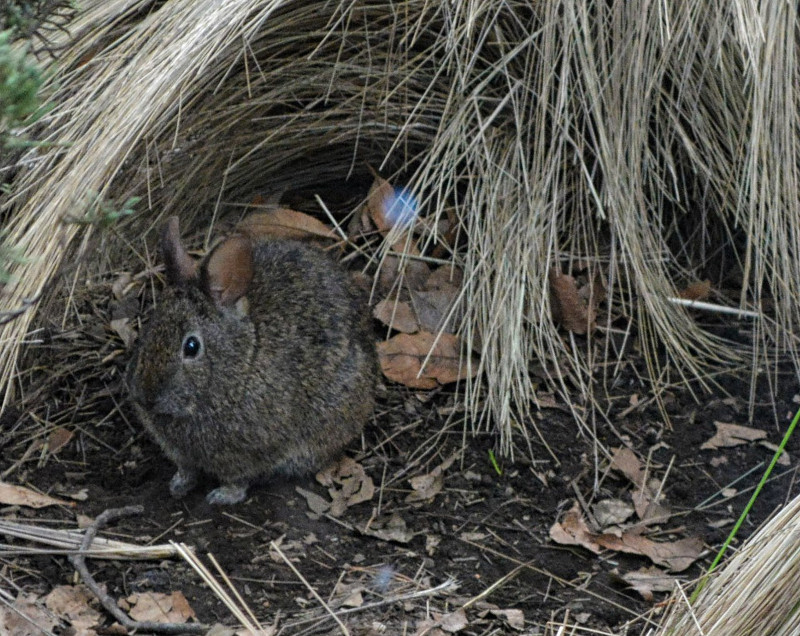Volcano Rabbit Facts
- First of all, the definitely attention-grabbing term Volcano Rabbit serves as the common name for a single small species of rabbit. Furthermore, this particular and unique variety of rabbit also holds yet another highly distinguishing claim to fame. That’s because it evolved as endemic to an extremely restricted, and unique, range.
- Furthermore, the small but truly remarkable animal also currently ranks as the second smallest known type of rabbit. Unfortunately, however, the overall population appears to be highly fragmented. Due to this, its population consists of only 150 – 200 known small groupings. In addition, each grouping holds no more than a handful of individuals.
- Quite unfortunately, the majority researchers presently estimate that no more than 1,200 individuals still exist. In point of fact, due to these frighteningly low numbers, this animal represents one of the rarest of all known varieties of small mammals. Finally, the IUCN quite understandably currently lists this remarkable animal as Endangered.
Related Articles
Volcano Rabbit Physical Description
Most notably, the remarkable Volcano Rabbit proves that a lack of physical size represents no hindrance to impressiveness. That’s because adult specimens of the fabulous species only average a weight of roughly 0.86-1.3 lb (390-600 grams) in weight.
In addition, most individuals reliably measured by researchers only reach a head and body length of about 9 in (22.8 cm). However, a few very exceptional specimens do occasionally attain overall lengths of as much as 12 in (30 cm).
This adorable small animal also possesses relatively small, rounded ears. Additionally, it also has short legs, and short, thick fur. The fur itself generally shows a yellowish gray in color, mixed with a slight dusting of short black hairs.
- Kingdom: Animalia
- Phylum: Chordata
- Class: Mammalia
- Order: Lagomorpha
- Family: Leporidae
- Genus: Romerolagus
- Species: R. diazi
Volcano Rabbit Distribution, Habitat, and Ecology
The rather surprising Volcano Rabbit has a natural habitat range that remains limited to only one specific portion of the world. That’s due to the fact that its only known habitat consists of certain rugged mountains of Mexico, in North America.
In fact, the very name of this diminutive mammal derives from the fact that it occurs only on the upper heights of four volcanoes south of Mexico City. Further, these small groupings only appear in a specific area, ranging in elevation ranging from 9,514-12,008 ft (2,900-3,660 m).
The Volcano Rabbit also distinguishes itself from most species of rabbits in its method of defense. Most rabbits thump their feet on the ground to warn others of danger. However, this fascinating creature developed a distinctly different approach to its defense. It emits a high pitched squeal. This makes it the only known type of rabbit to vocalize voluntarily.
The diet of the unique rabbit consists principally of comparatively tall local grass varieties. These also provide the creature with cover to conceal it from potential predators. During times of poor conditions, however, it will also consume various foliage and flowers. Finally, individuals primarily remain active during periods of dusk and dawn.
Species Sharing Its Range
Check out our other articles on Earth’s Many Mesmerizing Cephalopods, Olive Ridley Sea Turtle, Lake Kaindy, Christmas Cheer, Goldsmith Beetle, Japanese Angelshark, Crabeater Seal

